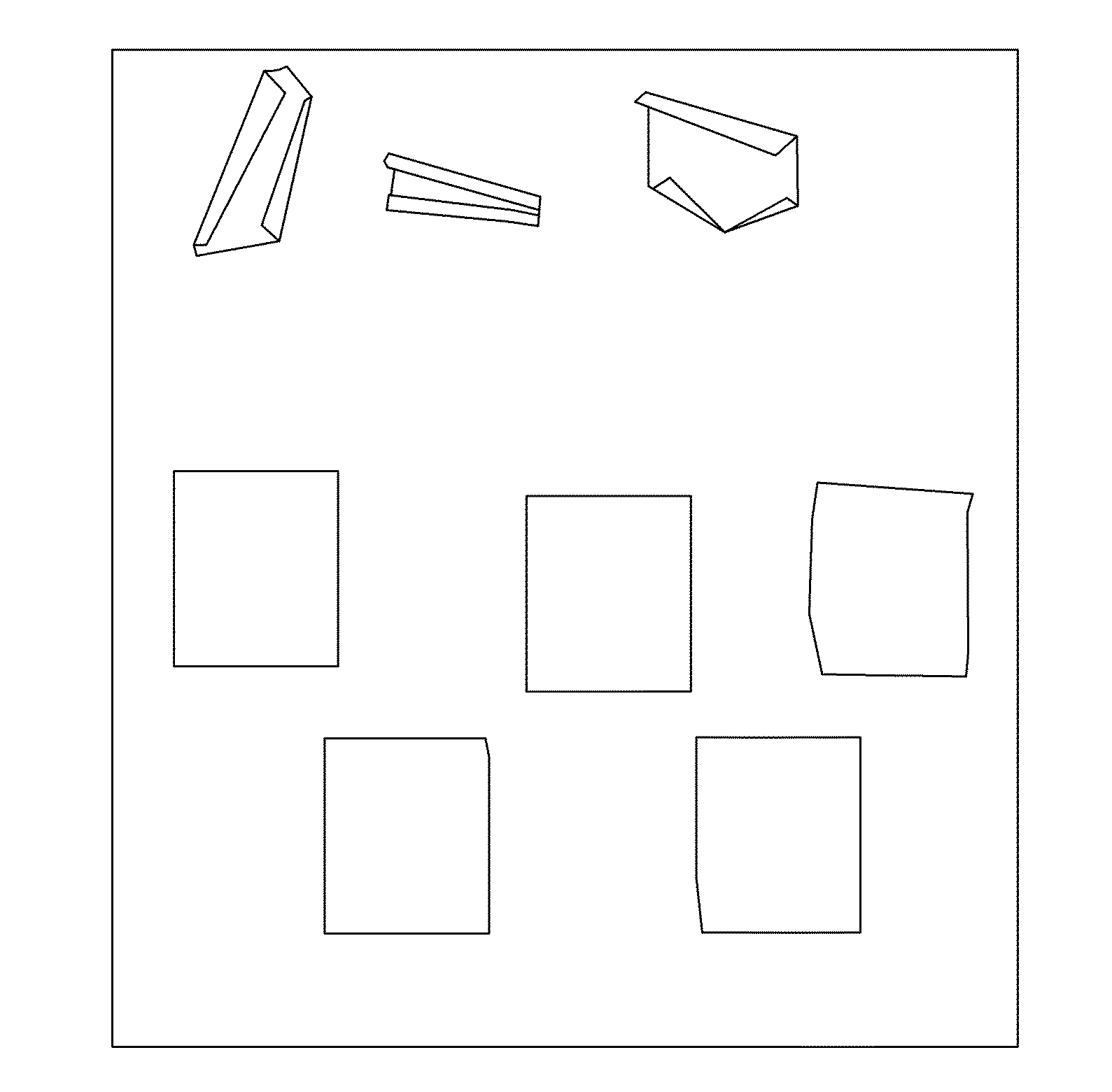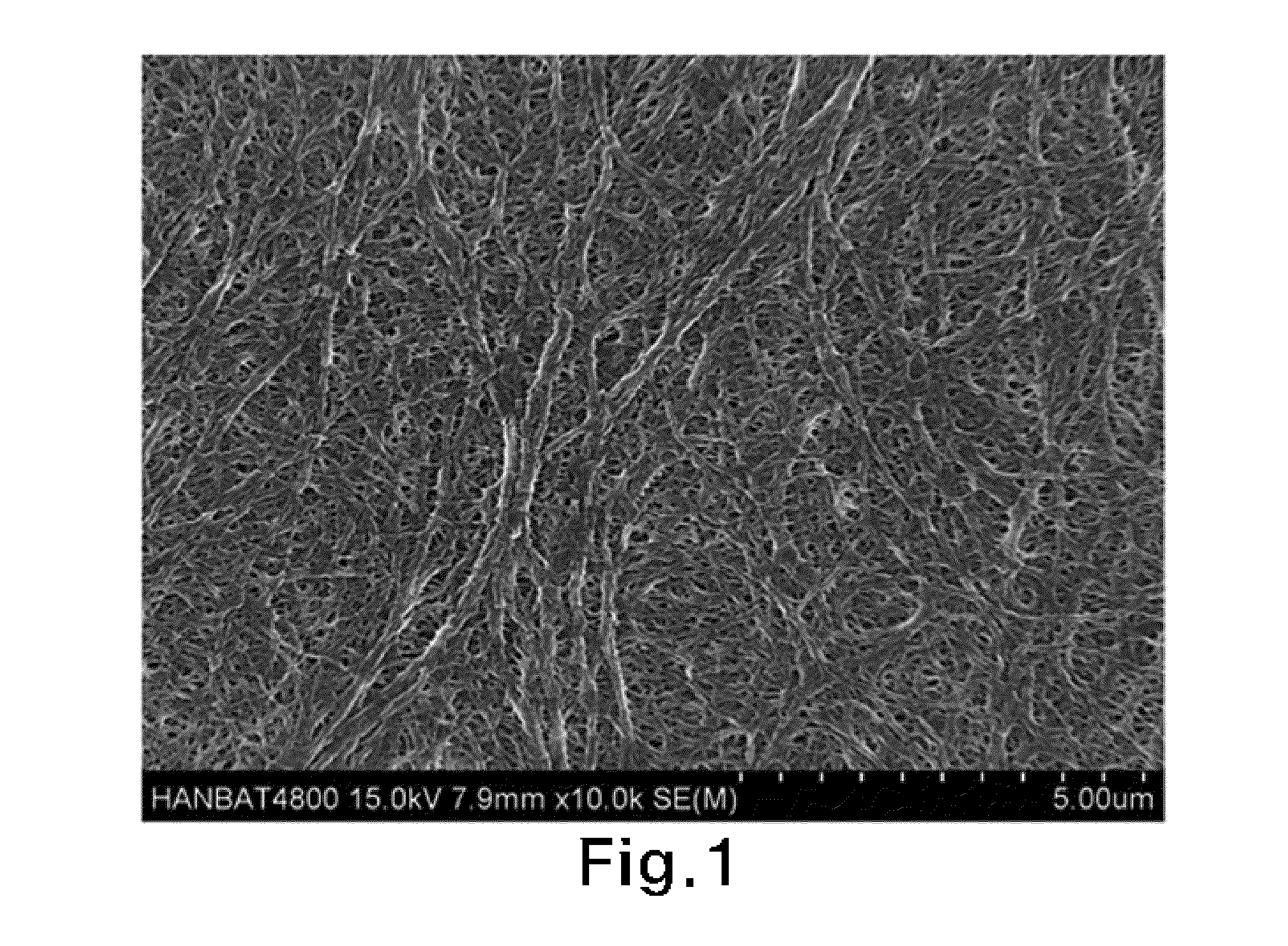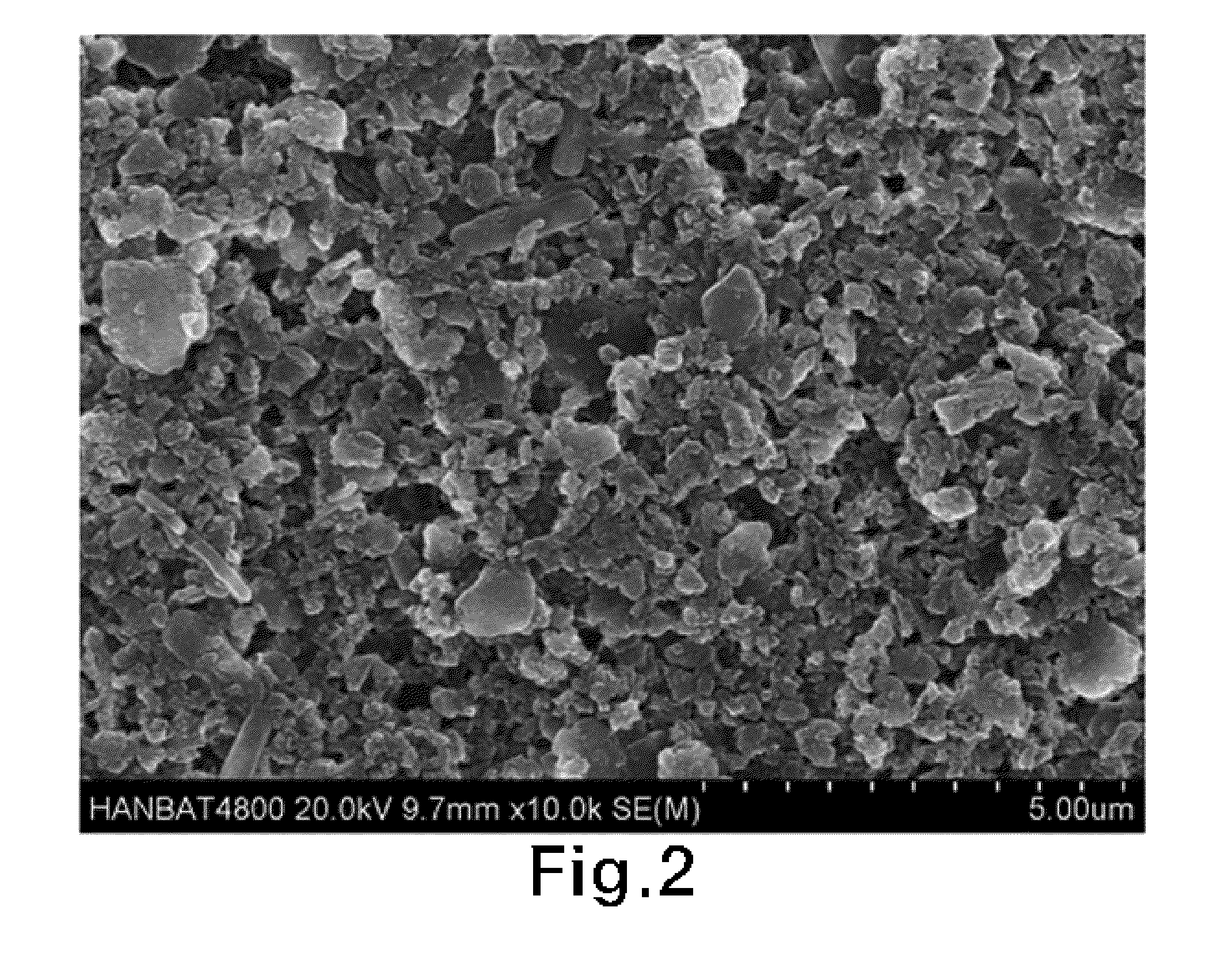Method for preparing cross-linked ceramic-coated separator containing ionic polymer, ceramic-coated separator prepared by the method, and lithium secondary battery using the same
a technology of ceramic coating and separator, which is applied in the direction of coating, cell components, cell component details, etc., can solve the problems of electrolyte leakage to the exterior of the battery, easy internal short circuit, safety accidents, etc., and achieve the effect of improving battery performance and improving adhesive strength
- Summary
- Abstract
- Description
- Claims
- Application Information
AI Technical Summary
Benefits of technology
Problems solved by technology
Method used
Image
Examples
example 1
[0067]In a first example, a ceramic-coated separator in accordance with preferred embodiments of the present invention was prepared in the following manner.
[0068]1.875 g of poly(lithium 4-styrenesulfonate) having the structure of the following formula 1 as a polymer binder containing ions was suitably dissolved in 6.0 g of water to prepare a polymer solution.
[0069]1.875 g of Al2O3 (with a particle size of 2 to 4 nm) as ceramic particles and 0.1 g of AlF3 as a functional inorganic compound were put into 94 g of dimethylacetamide as a solvent and uniformly dispersed by ball milling.
[0070]After mixing the thus prepared two solutions, Kayarad PET-30 (pentaerythritol triacrylate+pentaerythritol tetraacrylate, 7.5 wt % with respect to the coating material) as a curing agent and Irgacure 184 (1-hydroxy-cyclohexyl-phenyl-ketone, 6 wt % with respect to the curing agent) as an additive were added thereto and mixed.
[0071]The thus prepared solution was suitably coated on both sides of a porous ...
example 2
[0075]In another exemplary embodiment, a ceramic-coated separator in accordance with a further preferred embodiment of the present invention was prepared without the chemical cross-linking process.
[0076]1.875 g of poly(lithium 4-styrenesulfonate) having the structure of formula 1 as a polymer binder containing ions was suitably dissolved in 6.0 g of water to prepare a polymer solution.
[0077]1.875 g of Al2O3 (with a particle size of 2 to 4 nm) as ceramic particles and 0.1 g of AlF3 as a functional inorganic compound were put into 94 g of dimethylacetamide as a solvent and uniformly dispersed by ball milling.
[0078]Preferably, the thus prepared two solutions were mixed to obtain a uniform solution, and the solution was suitably coated on both sides of a porous polyethylene membrane substrate having a thickness of 25 μm and a porosity of 40%, and the resulting substrate was suitably dried in an oven at 70° C. for about 30 seconds.
[0079]In a further preferred embodiment, the resulting su...
example 3
[0080]In another exemplary embodiment, a ceramic-coated separator in accordance with a further preferred embodiment of the present invention was suitably prepared in the same manner as Example 1 except that BaTiO3 was used as ceramic particles added to suitably prepare a coating material instead of Al2O3.
PUM
| Property | Measurement | Unit |
|---|---|---|
| diameter | aaaaa | aaaaa |
| porosity | aaaaa | aaaaa |
| temperatures | aaaaa | aaaaa |
Abstract
Description
Claims
Application Information
 Login to View More
Login to View More - R&D
- Intellectual Property
- Life Sciences
- Materials
- Tech Scout
- Unparalleled Data Quality
- Higher Quality Content
- 60% Fewer Hallucinations
Browse by: Latest US Patents, China's latest patents, Technical Efficacy Thesaurus, Application Domain, Technology Topic, Popular Technical Reports.
© 2025 PatSnap. All rights reserved.Legal|Privacy policy|Modern Slavery Act Transparency Statement|Sitemap|About US| Contact US: help@patsnap.com



